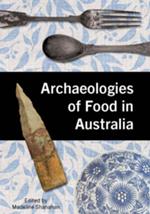Twenty-first century Australia is a nation somewhat obsessed with food. From cookbooks to television screens, we are surrounded by conversations about what and how we eat. This fixation highlights the fact that food is, and always has been, a central component of human culture – especially in a diverse nation like Australia. In recent years, this contemporary food focus has increasingly looked to the past for answers relating to health and sustainable practices. While historians in Australia have contributed extensively to these discussions, there has been surprisingly little input from archaeologists. This is even more surprising when we consider that so much of what archaeologists excavate – such as faunal remains, ceramics and cesspits – can collectively tell the story of food culture when drawn together and considered as a whole.

Archaeologies of food in Australia
ISBN: 9781761540493
Format: Paperback
Publisher: Sydney University Press (ADS)
Origin: AU
Release Date: November, 2025
151951

